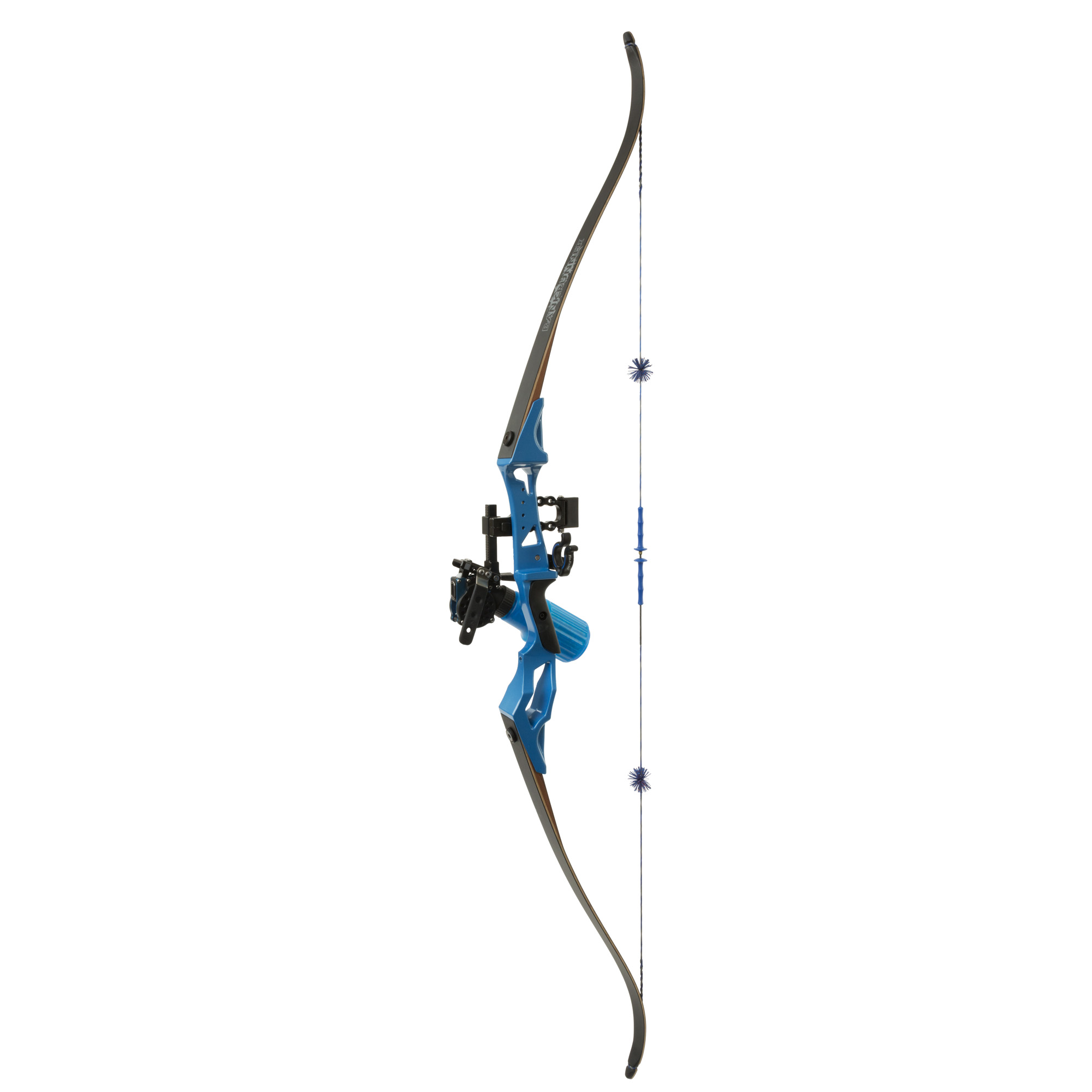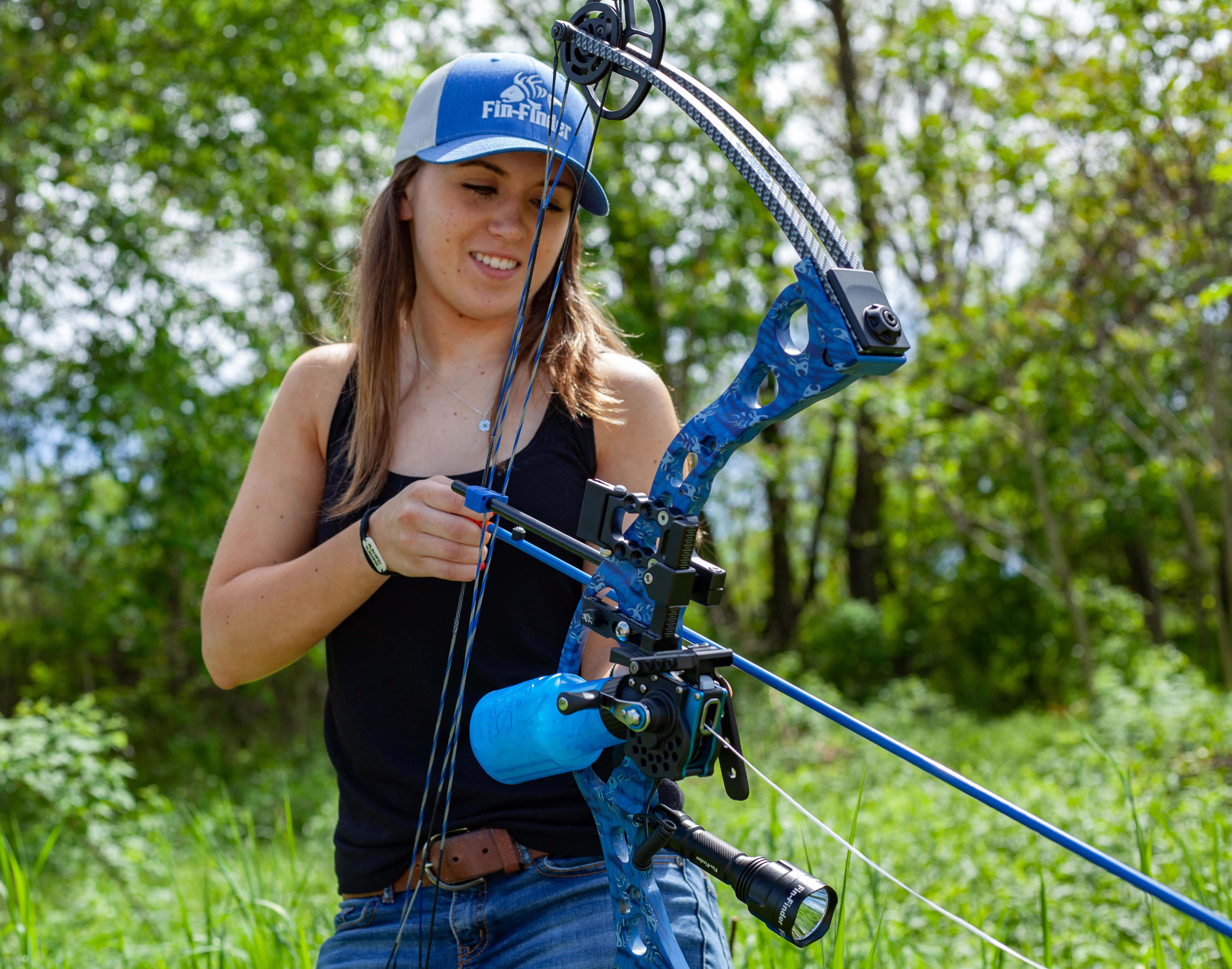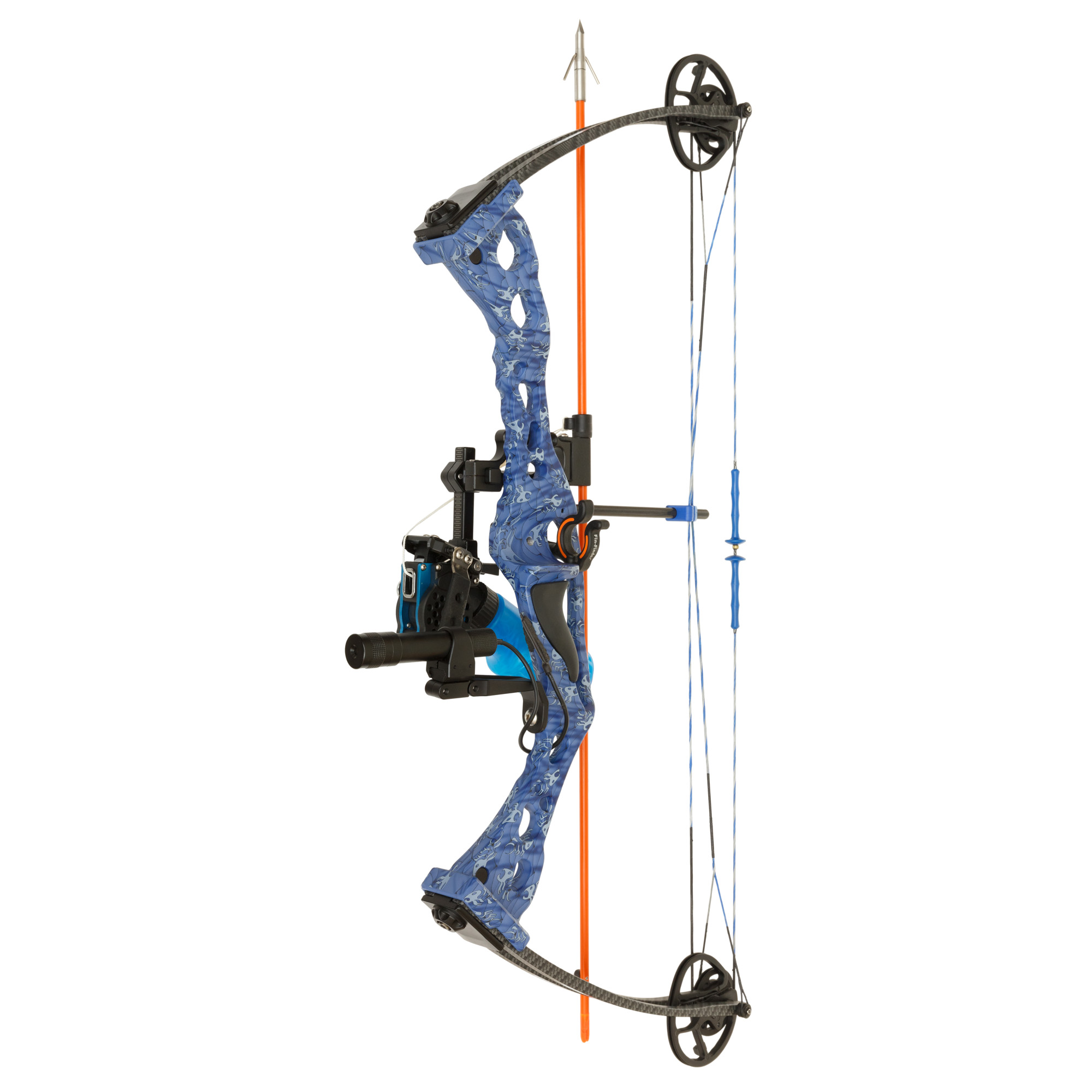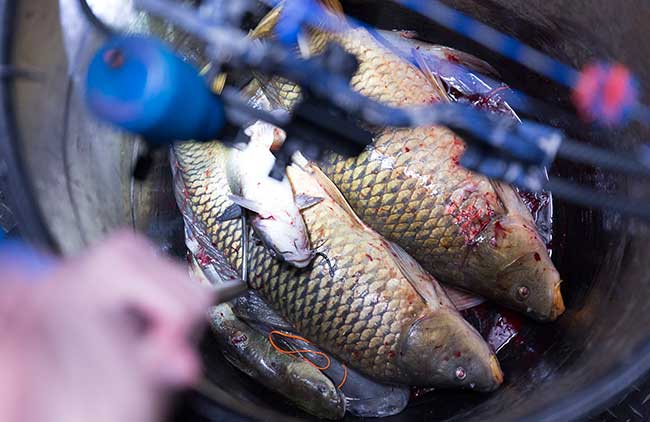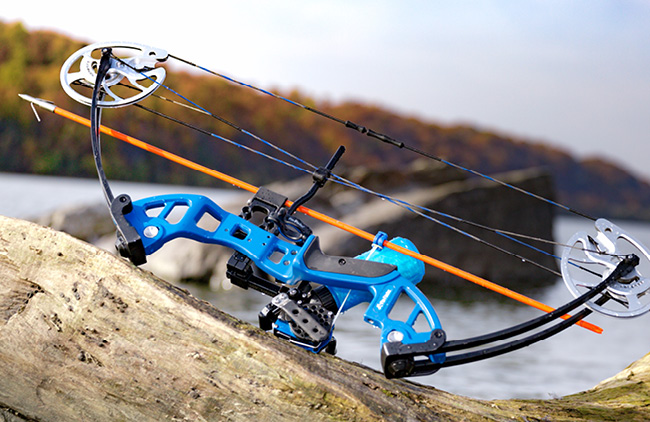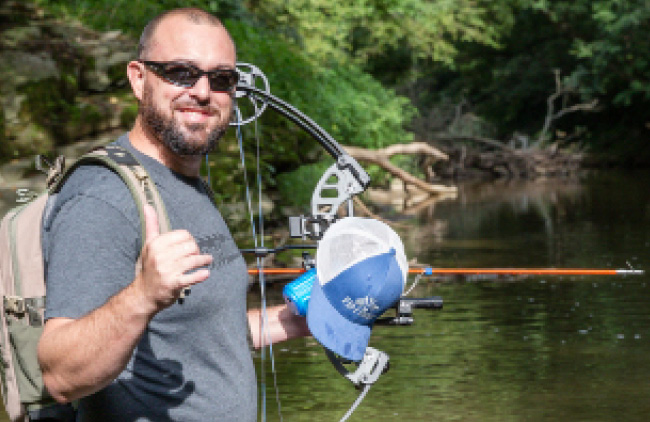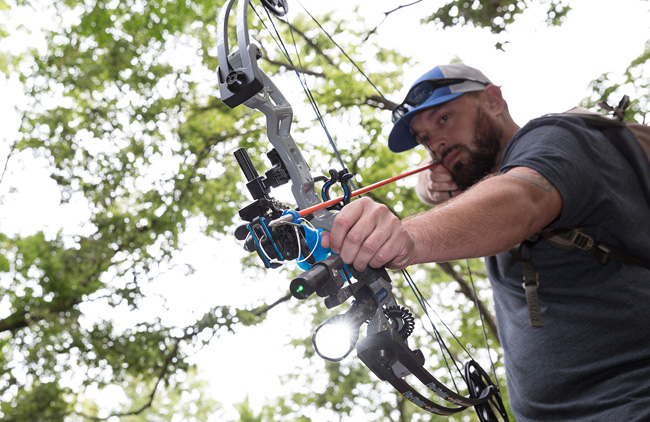Compound Versus Recurve Bowfishing Bows
Which bowfishing bow is right for you?
If you’re new to the bowfishing game and wanting to purchase your first bowfishing set up, it can be a bit overwhelming. There are a lot of options to choose from, and chances are you’re unsure which setup is best for you.
One of the biggest decisions is choosing the right bow… compound or recurve?
Recurve Bowfishing Bows
First, let’s take a look at the recurve bow. Traditional bows are often overlooked and underrated when it comes to bowfishing. The simplicity of the recurve makes it ideal for anyone starting out, especially if you’re new to archery and not just new to bowfishing.
Speaking from a price point perspective, a recurve is also the more affordable option. If you’re on a budget, keep that in mind.
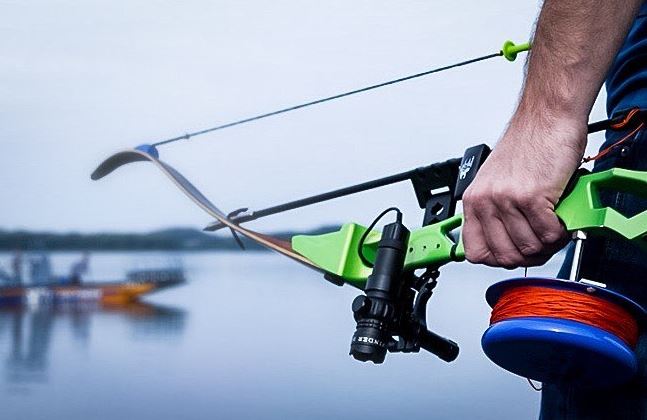 A recurve is a stick and string; you don’t have to worry about cams or let-off. Anyone can pick up the same recurve and go shoot it, as it is a continuous draw weight and draw length. This makes Traditional bowfishing bows ideal for snap shooting, which is shooting quickly without coming to full draw. Many shots are taken this way when there is a lot of fast moving fish. This is slightly more difficult with a compound.
A recurve is a stick and string; you don’t have to worry about cams or let-off. Anyone can pick up the same recurve and go shoot it, as it is a continuous draw weight and draw length. This makes Traditional bowfishing bows ideal for snap shooting, which is shooting quickly without coming to full draw. Many shots are taken this way when there is a lot of fast moving fish. This is slightly more difficult with a compound.
On the other hand, a continuous draw weight means you cannot lower the weight. If you can’t comfortably draw the bow, (most bowfishing recurves are 40 or 45 pounds at 28 inches) you may want to try a compound or a lighter recurve.
The simplicity of the recurve also means fewer things can go wrong or break. It’s extremely easy to change the string on a recurve (as long as you do it properly) and you can carry an extra string with you in case of emergencies. This is something you cannot do with a compound, as they require a bow press to change the string.
The majority of bowfishing recurves are also “takedowns”, meaning you can literally take the bow down into three pieces with nothing but an Allen key. This also makes it easy to clean.
Put it in a backpack if you’re hiking good ways, or if you don’t have a lot of room in your vehicle. Once you reach your destination, simply slide the limbs back on to the riser and tighten the bolts. You will want to make sure you keep an Allen key with you and ensure the limbs are properly seated before putting the string back on.
With a Traditional bowfishing bow, you will also want to consider draw length: if you have a shorter draw length, you won’t be getting the full draw weight of the bow, thus you won’t be able to take far shots. The majority of shots are fairly close, but it’s still something to consider.
Although bowfishing recurves are generally designed to be equipped with any style of a reel, keep in mind a heavier bowfishing line will slow down your arrow slightly. You will most likely have more accurate shots with a smaller braided line as opposed to a thicker braid. Hand reels are extremely popular for bowfishing recurves, not only because of their “Traditional” look and feel but because they are extremely simple to use.
If you are already a Traditional shooter, GREAT! The fact that you are already shooting instinctively will only be an asset to your bowfishing skills.
Compound Bowfishing Bows
Now, let’s look at the pros and cons of bowfishing with a compound. If you hunt with a compound bow, you are already familiar with the components and how they work. A compound is a more popular choice for bowfishing simply because it’s what most people hunt with.
However, keep in mind that bowfishing is of an instinctive nature. You won’t be shooting with a bow sight or any type of release aid. Bowfishing is a sport where you will be shooting quickly at fish that are various depths and ranges… instinctively shooting is key and will become easier with practice.
One of the biggest pros of shooting a compound is the fact that they have an adjustable draw weight. You can set it to whatever is comfortable for the shooter so there is no struggle drawing the bow.
Let-off: although most bowfishing compounds have less let-off than a hunting bow, they still hit hard. You can generally make longer shots than with a recurve. Some bowfishing compounds are designed with little to no let- off to make it easier to snap shoot. Keep in mind, the heavier your draw weight, the harder it will hit. Ideally, you will want to shoot a weight anywhere from 35-55 pounds. You’ll want to be sure your draw weight is comfortable for you, as ideally, you will be shooting quite often in a short period of time
A harder hitting bow such as a compound will also shoot heavier tipped arrows more accurately. Harder hitting bows will also get better penetration on big fish or fish swimming in deeper waters.
Compound bowfishing bows are designed to fit any type of reel and it all comes down to personal preference when it comes to the reel you choose.
One of the biggest cons to bowfishing with a compound is the fact that the cams can occasionally get jammed with mud and dirt. You’ll want to make sure you clean your bow well after each use, which will also help keep your string and cables from wearing down.
When it comes to compounds, you will also want to be more careful about dropping your bow (no, it is not ideal for any bow). If you bend or dent the cams, you may have some difficulties coming to full draw, and worst case scenario breaks your string. A broken string can also lead to broken limbs and the worst case scenario can be dangerous to you.
A compound is also a heavier bow to carry around. This may not seem like a big deal if you’re a boat fisherman, but if you end up wading the creek beds all day, you will definitely notice!
Whichever you choose, remember there’s no wrong answer! At the end of the day, both bows will kill fish and get the job done.

